MARIANI’SVirtual Gourmet
February 12,
2012
NEWSLETTER
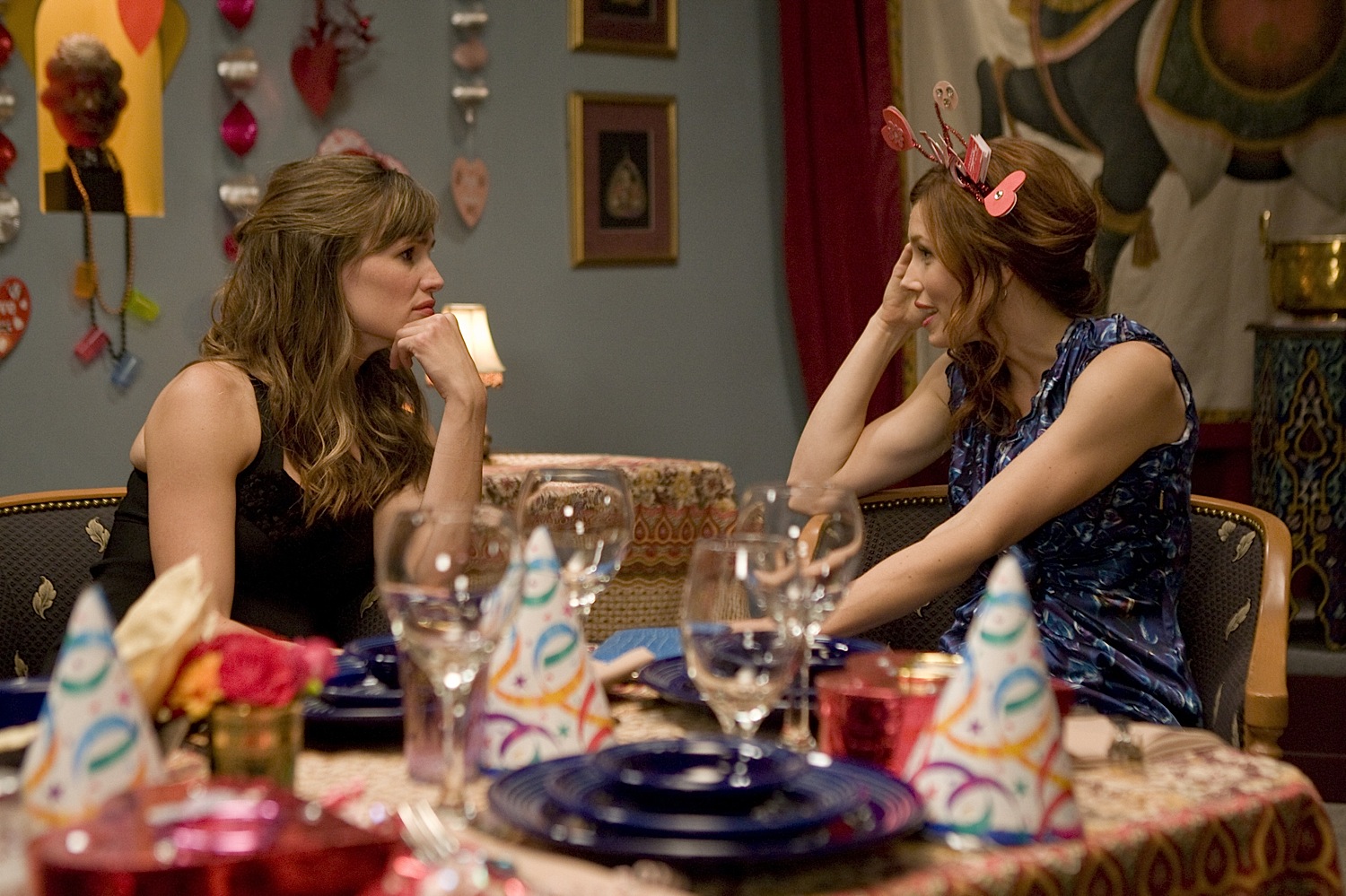
Jennifer
Garner and Jessica Alba in "Valentine's Day"
(2010)
Happy Saint
Valentine's Day!
❖❖❖
❖❖❖
THIS
WEEK
by John A. Curtas
NEW YORK CORNER
VAI
by John
Mariani
NOTES FROM THE WINE CELLAR
by Brian Freedman
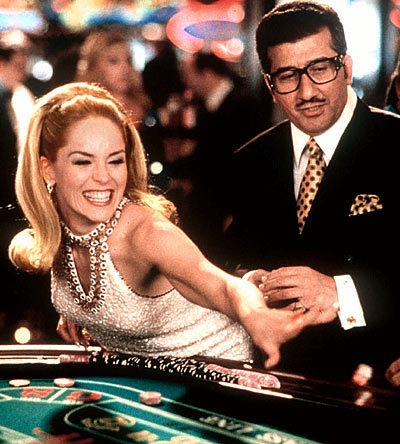
by John A. Curtas
As
you'd expect for a city with so much moolah sloshing
around, Las Vegas is home to some of the best and
most expensive restaurants in the world. If you've
won big at the tables or need a way to restore your
spirit, these are the places to go.
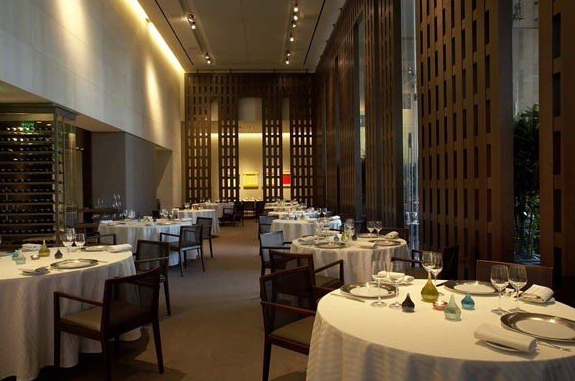 Restaurant
Guy Savoy
Restaurant
Guy Savoy
Caesar's Palace
The
most fundamentally French restaurant in town, Guy
Savoy's food is rarely less than perfect. His wine
list is probably the city's 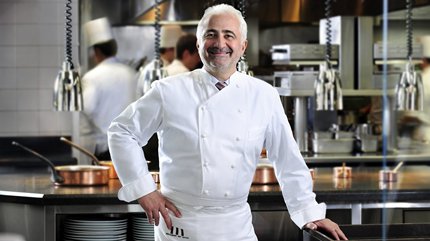 best, both in
breadth and depth, and it's filled with trophy bottles
from Savoy's cellar in Paris, as well as a large
selection of reasonably priced New World producers. No
matter what you choose, you can depend on Savoy's food
being spot-on renditions of the dishes that earned his
restaurant three Michelin stars in Paris, such as
oysters en
gelée (Kumamotos atop oyster cream
topped with oyster jelly) and poulet en cocotte,
and
the creamiest, whitest veal chop on the planet. Savoy
features no beef in his Parisian original, but he's
proud of his tournedos here, as well as the American
veal plated and served by the top-notch
staff. Main
courses $80-$175, 10-course tasting menu $298. Open
Tue-Fri. for dinner only.
best, both in
breadth and depth, and it's filled with trophy bottles
from Savoy's cellar in Paris, as well as a large
selection of reasonably priced New World producers. No
matter what you choose, you can depend on Savoy's food
being spot-on renditions of the dishes that earned his
restaurant three Michelin stars in Paris, such as
oysters en
gelée (Kumamotos atop oyster cream
topped with oyster jelly) and poulet en cocotte,
and
the creamiest, whitest veal chop on the planet. Savoy
features no beef in his Parisian original, but he's
proud of his tournedos here, as well as the American
veal plated and served by the top-notch
staff. Main
courses $80-$175, 10-course tasting menu $298. Open
Tue-Fri. for dinner only.
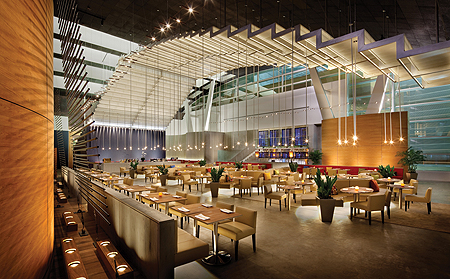 Bar Masa
Bar Masa
Aria Hotel
This
is only place to go in Las Vegas 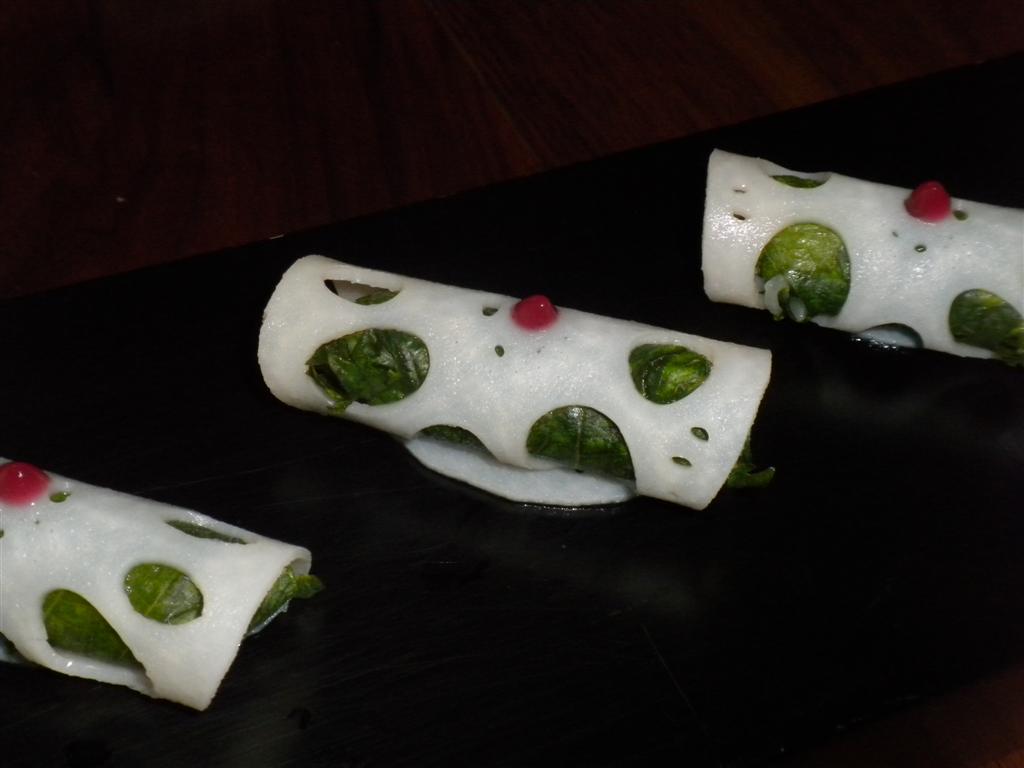 for sushi and
sashimi--when someone else is paying. The quality of
the raw ingredients (most flown in from Japan) is an
immediate education in the subtleties that comprise a
superior Japanese dining experience. The size of your
pocket and your sensibilities will determine whether
you think paying $15 apiece for toro tuna, or $10
apiece for akamutsu
(deep-sea snapper), or $34 for a kegani hairy-crab
salad
is worth it. Ignore the gymnasium feel of the place
and be dazzled by the dancing shrimp, whitefish
sampling platter, yari
ika (squid) or the kanpachi with jalapeño sotomaki,
each one more ethereal than the last. Average main courses
$26-$38, sushi from $6 per piece, early-evening set
menu $49. Open
Wed-Sun. for dinner only.
for sushi and
sashimi--when someone else is paying. The quality of
the raw ingredients (most flown in from Japan) is an
immediate education in the subtleties that comprise a
superior Japanese dining experience. The size of your
pocket and your sensibilities will determine whether
you think paying $15 apiece for toro tuna, or $10
apiece for akamutsu
(deep-sea snapper), or $34 for a kegani hairy-crab
salad
is worth it. Ignore the gymnasium feel of the place
and be dazzled by the dancing shrimp, whitefish
sampling platter, yari
ika (squid) or the kanpachi with jalapeño sotomaki,
each one more ethereal than the last. Average main courses
$26-$38, sushi from $6 per piece, early-evening set
menu $49. Open
Wed-Sun. for dinner only.
CUT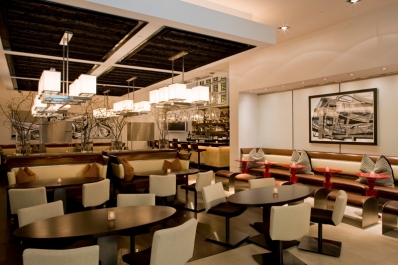
Palazzo Hotel
Is this the best of scores of
high-end steakhouses in Vegas? Wolfgang Puck's
offshoot from the Beverly Hills original certainly
serves up the most inventive non-steak dishes. Everything from
the pristine oxtail broth to the bone-marrow flan to
the hot potato knishes to the lamb chops with a
mint-cucumber raita
to the thyme-lavender roasted duck to the classic
Dover sole are the equal of the prime grass- and
corn-fed beef on offer. In fact, some tables skip the
steaks entirely and make a meal from the stunning
small plates, appetizers and sides. The wine list,
under sommelier Lindsey Whipple, has vastly improved
in the past two years, both in selection and price. Starters from $17,
steaks from $51; open daily for dinner only.
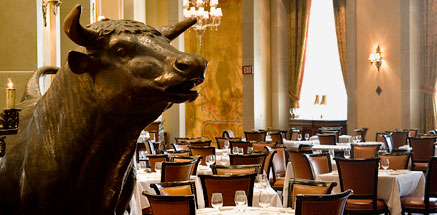 Carnevino
Carnevino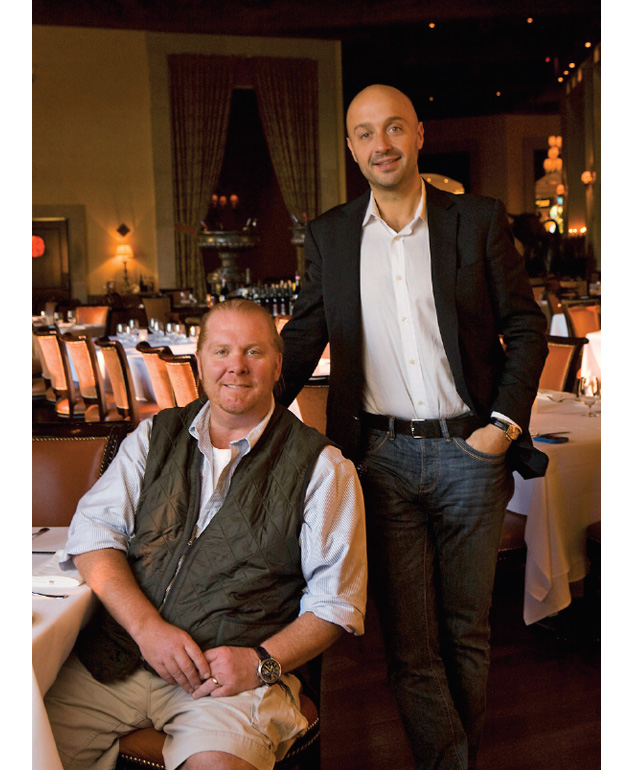
Palazzo Hotel
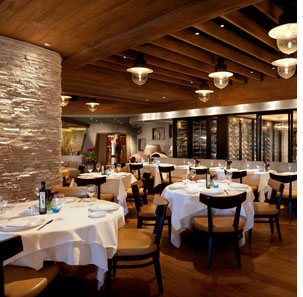 Estiatorio
Milos
Estiatorio
Milos
Cosmopolitan Hotel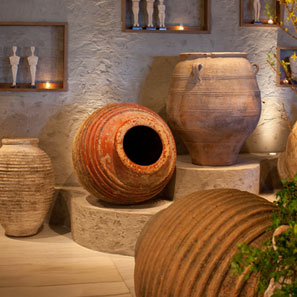
Chef/owner
Costas Spiliadis seems to be on the premises for a
remarkable amount of the time for a man who has
restaurants on two continents. This offshoot of the
Montreal original (others reside in New York and
Athens) has a serene elegance that strikes you as soon
as you enter the low-ceilinged, softly lit space and
is detected in every refined, discriminating
ingredient placed before you. The two-page menu has 11
appetizers on the left side, five salads and
vegetables on the right, and a single heading that
says simply From The Sea, leading you to the huge
fish/seafood/vegetable counter against the far wall,
where the day's catch is displayed for you to peruse
and choose from. Main courses $40-75. Open
daily for lunch and dinner.
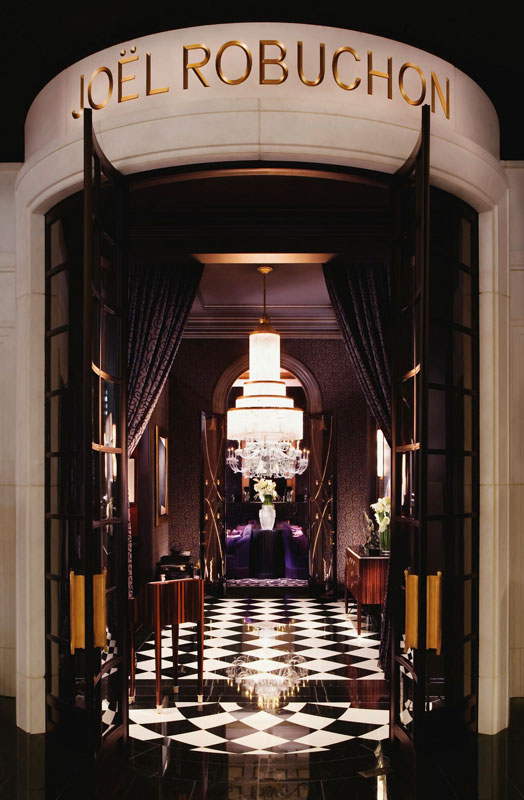 Joël
Robuchon
Joël
Robuchon
MGM Grand Hotel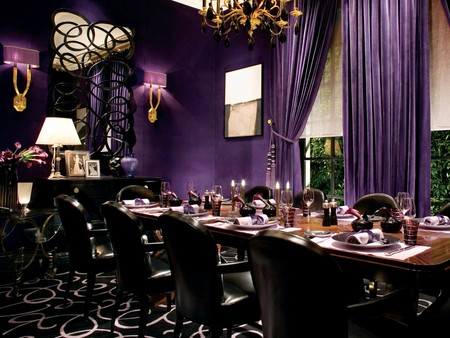
Paris
doesn't have one. Neither does London or New York.
Only Vegas has the eponymous dining salon named after
and run by "The Chef of the Century" (well, according
to Gault-Millau back
in 1990). As stale as the accolade might be, there is
nothing tired about the food being turned out at this
exquisite, relentlessly French jewel box in the bowels
of the MGM Hotel. Bring money and an appetite, because
you'll need both to support the ornate, precise, and
highly decorative food being turned out by Joël's
chief lieutenant, Claude Le Tohic. Between them, they
create seasonal menus of impeccable provenance.
Whether it's Australian spiny lobster in a Thai herb
broth, or "chaud-froid"
(hot-cold) sea urchin on a fennel/potato puree flecked
with anise-spiked orange, this is over-the-top cooking
that makes no apologies for its extravagance.
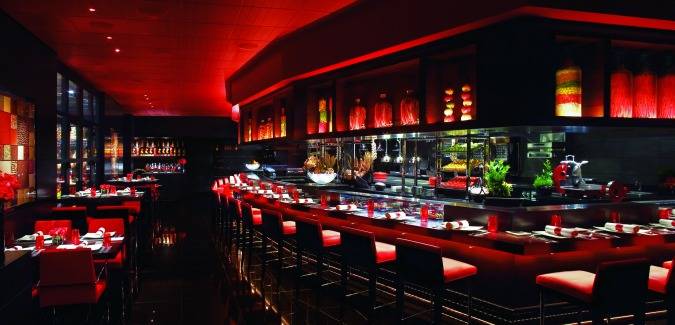 L'Atelier
de Joël Robuchon
L'Atelier
de Joël Robuchon
Begin
at the sleek counter with crisp langoustine
fritters served with a smudge of basil pesto. From
there the possibilities range from good prosciutto
served with toasted tomato bread, ethereal poached
Kumamoto oysters sitting in their shells in a warm
bath of salted butter, to a beautiful piece of
sautéed duck liver atop a tiny minced-citrus
gratin. L'Atelier is hands-down the favorite
"everyday" casual restaurant of every chef and foodie
in Vegas. It's expensive (though far less expensive
than its big brother next door), but almost flawless.
Every dish highlights what perfectionist chefs--in
this case executive chef Steve Benjamin and pastry
chef Kamel Guechida--can do with the best ingredients
money can buy. Main courses from $59, seasonal
discovery tasting menu $155. Open nightly for
dinner.
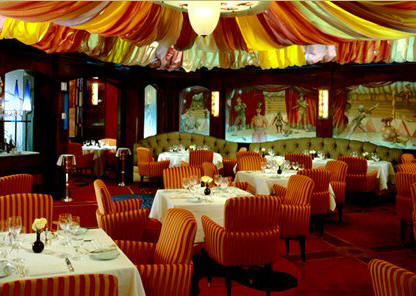 Le
Cirque
Le
Cirque
Bellagio Hotel
Executive
chef Gregory Pugin took the helm here early in 2011,
bringing a modern, lighter sensibility to Le Cirque's
food that was long overdue.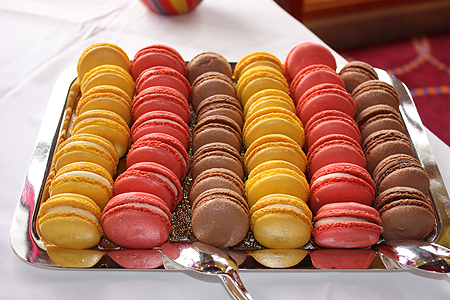 You can still
get classics like blanquette
de lapin and Le Cirque lobster salad, but one
bite of his langoustines with caviar, passion fruit,
apples and vodka gelée will bring tears to the
eyes of even the most jaded gourmets. The service
staff is virtually unchanged in 12 years, sommelier
Freddy Montandon still charms the ladies while
convincing the captains of American industry to order
something other than a boring old California cab, and
the whole place buzzes with an intimacy that is
without peer in Sin City. Save room for Philippe
Angibeau's drop-dead desserts.
You can still
get classics like blanquette
de lapin and Le Cirque lobster salad, but one
bite of his langoustines with caviar, passion fruit,
apples and vodka gelée will bring tears to the
eyes of even the most jaded gourmets. The service
staff is virtually unchanged in 12 years, sommelier
Freddy Montandon still charms the ladies while
convincing the captains of American industry to order
something other than a boring old California cab, and
the whole place buzzes with an intimacy that is
without peer in Sin City. Save room for Philippe
Angibeau's drop-dead desserts.
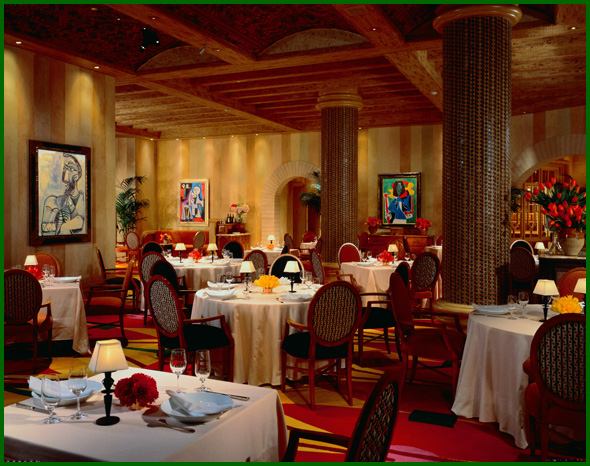 Picasso
Picasso
Bellagio Hotel
Perhaps
the only restaurant in the world where the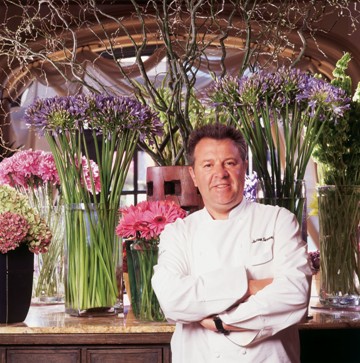 art detracts
from the food and where you routinely see diners
walking around the room and treating it like a
mini-museum of the master's works. (Yes, they are all
originals.) In the kitchen, Julian Serrano (right) serves up
Cal-Ital-Mediterranean cooking has earned him a
devoted following of foodies, who rave about the
sweetest Nantucket scallops you'll ever taste and his
various masterful treatments of foie gras. The wine
list, overseen by Master Sommelier Robert Smith, is
rich with the varietals of Spain and other
Mediterranean climes. For food, wine, and décor
of this caliber, the tariff--$113 for four courses,
$123 for five--plus an amuse-bouche here and a pre-dessert
there--is remarkably reasonable. Open Wed-Mon. for
dinner.
art detracts
from the food and where you routinely see diners
walking around the room and treating it like a
mini-museum of the master's works. (Yes, they are all
originals.) In the kitchen, Julian Serrano (right) serves up
Cal-Ital-Mediterranean cooking has earned him a
devoted following of foodies, who rave about the
sweetest Nantucket scallops you'll ever taste and his
various masterful treatments of foie gras. The wine
list, overseen by Master Sommelier Robert Smith, is
rich with the varietals of Spain and other
Mediterranean climes. For food, wine, and décor
of this caliber, the tariff--$113 for four courses,
$123 for five--plus an amuse-bouche here and a pre-dessert
there--is remarkably reasonable. Open Wed-Mon. for
dinner.
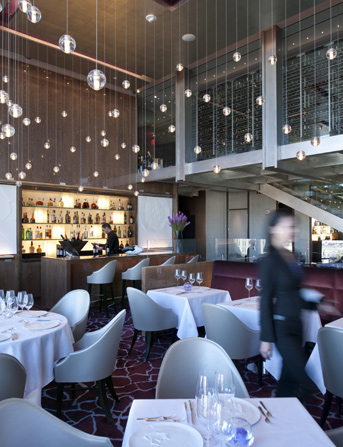 Twist by
Pierre Gagnaire
Twist by
Pierre Gagnaire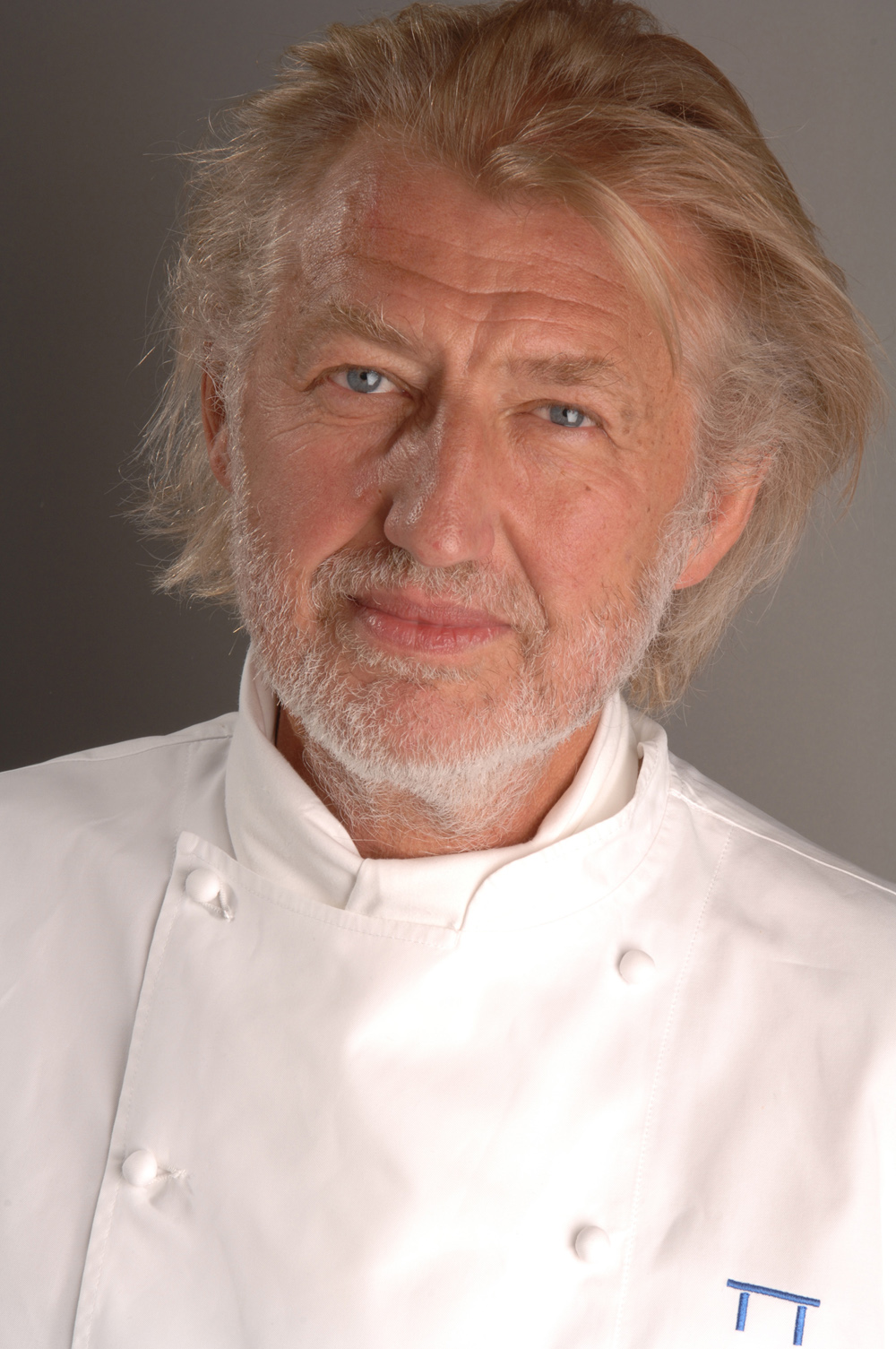
Mandarin Oriental Hotel
If Robuchon is the most elaborate and
Savoy the most elegant of Vegas's great restaurants,
Gagnaire matches
them for the creativity of its cuisine, which is often
as baffling as it is exhilarating. One look at his
scallop carpaccio with Campari or mushroom broth tells you that
you're in the hands of the enfant terrible (right) of French
cooking. The years haven't dimmed Gagnaire's incessant
search for astounding edibles and his Nebraska sirloin
with escargot sauce and venison ice-cream provides a
window into the intellectual curiosity that drives his
talent. Main
courses $44-98, three-course menu $105, six-course
tasting menu $189. Open nightly for dinner.
John
Curtas is a Vegas-based restaurant critic and food
writer. This article originally appeared in
different form in The Guardian.
❖❖❖
NEW
YORK CORNER
by
John Mariani
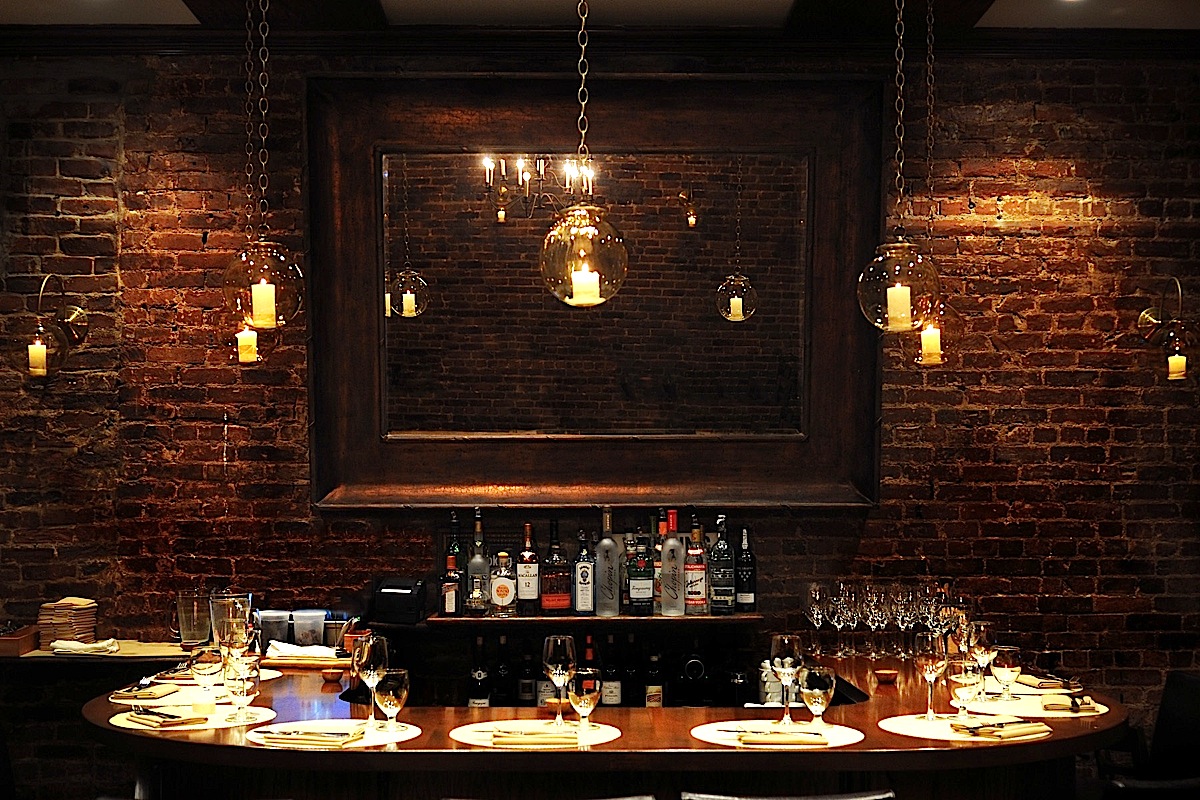
429 Amsterdam
212-362-4500
www.vairestaurant.com
There is a Vai in Soho that I have not been to, so I can't compare it with the new version on the Upper West Side, where Chef/owner/wine director/pastry chef,' etc, etc, etc, Vincent Chirico is doing a splendid job bringing a version of his Italian/Mediterranean cuisine to a modest-looking, brick-walled trattoria in need of one this good, this imaginative, and so reasonably priced.
Chirico's culinary résumé includes stints at Aquavit, Jean Georges, and Daniel, and there is clear finesse in every dish at the new Vai, which is casual and warmhearted, with a horseshoe butcher block bar, where they serve brunch and signature cocktails, pretty glass hanging lighting and sconces, leather banquettes, and chiffon curtains that balance out the hard brick textures. Small in size, it is loud when full, so there's no reason to add background music to the mix. But they do.
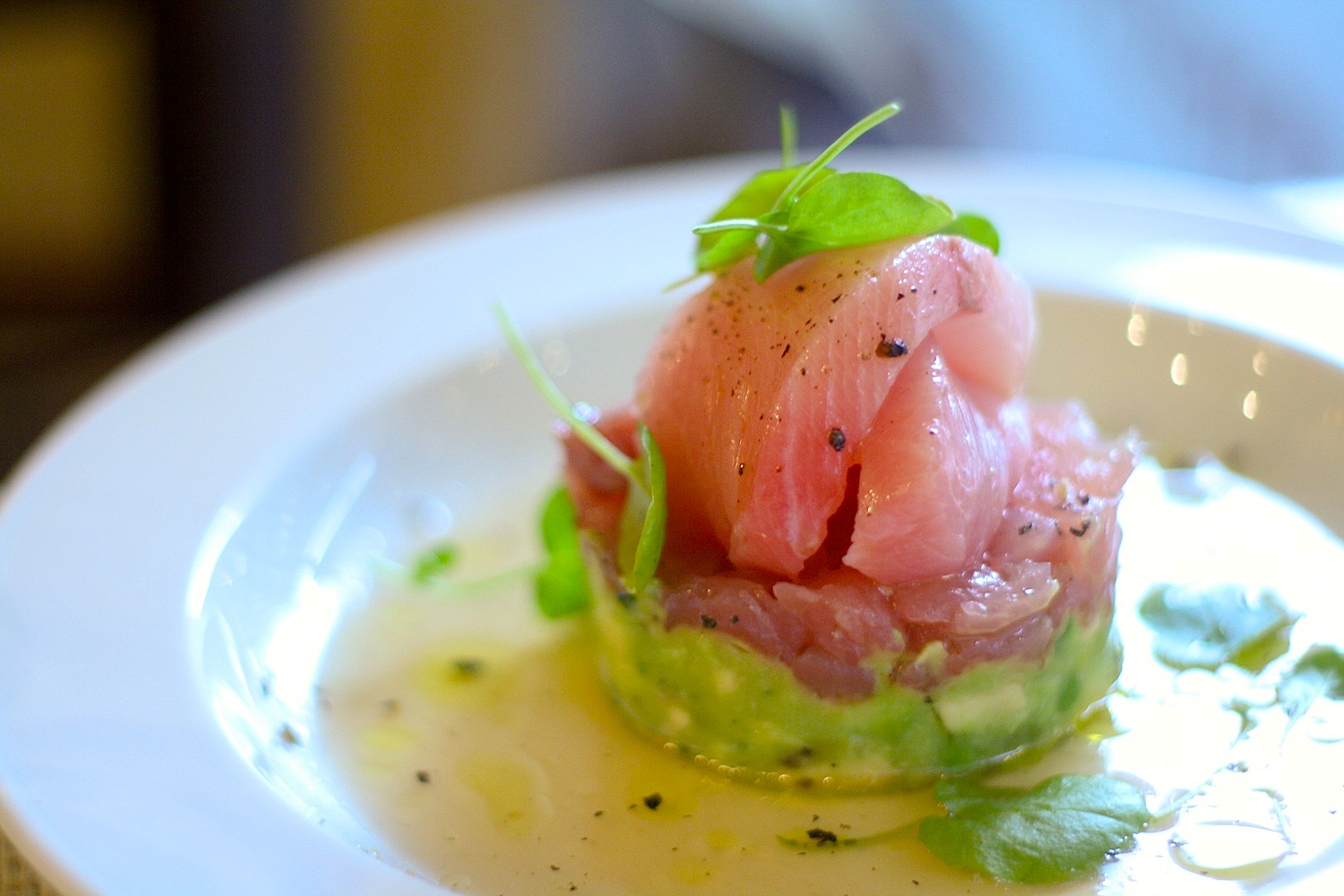 The raw crudo items at
the top of the menu are a pleasant surprise and offer
some of the best eating here, from hamachi and
yellowfin tuna perkily set atop sweet avocado with a
preserved ginger sauce (left) that provides a subtle tingle
to the pure taste of the fish; jumbo fluke ceviche
with sweet onion, jalapeño and mint chili arbol has some
snap too. Move on to appetizers like charred but
tender octopus with a jalapeño pesto and crisp
potatoes, another example of how to add zest without
overpowering anything on the plate.
Sautéed Gulf shrimp of considerable heft came
with chorizo and a nicely seasoned soffrito.
The raw crudo items at
the top of the menu are a pleasant surprise and offer
some of the best eating here, from hamachi and
yellowfin tuna perkily set atop sweet avocado with a
preserved ginger sauce (left) that provides a subtle tingle
to the pure taste of the fish; jumbo fluke ceviche
with sweet onion, jalapeño and mint chili arbol has some
snap too. Move on to appetizers like charred but
tender octopus with a jalapeño pesto and crisp
potatoes, another example of how to add zest without
overpowering anything on the plate.
Sautéed Gulf shrimp of considerable heft came
with chorizo and a nicely seasoned soffrito. We tried three pastas that included a perfectly al dente tagliatelle with a rich veal ragù, shards of ricotta salata, a touch or oregano and oven-roasted tomato, this last adding sweetness to the already complex ragù. Ravioli was plumped up with soft-centered burrata cheese then lavished with
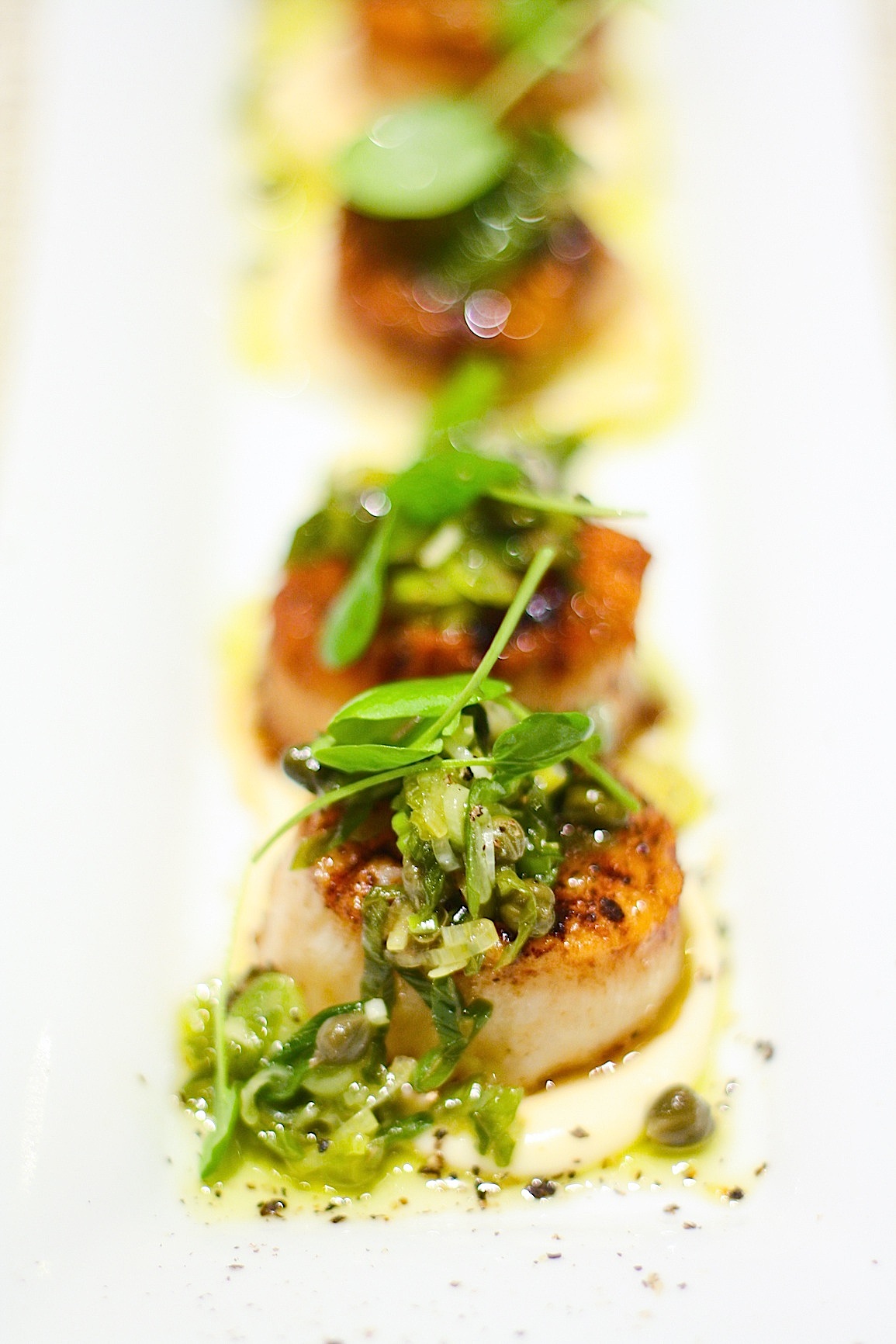 truffle cream and
parmigiano--as magnificent and munificent dish as I've
had all year. Spaghettini came with briny New Zealand
cockles and the true Mediterranean taste of preserved
lemon and a jolt of Calabrian chili-garlic.
Everything on Vai's menu--which changes about 25
percent each week--has notes and counter-notes of
flavors and textures.
truffle cream and
parmigiano--as magnificent and munificent dish as I've
had all year. Spaghettini came with briny New Zealand
cockles and the true Mediterranean taste of preserved
lemon and a jolt of Calabrian chili-garlic.
Everything on Vai's menu--which changes about 25
percent each week--has notes and counter-notes of
flavors and textures. Being so Mediterranean, Vai's main courses are dominated by the sea, and we thoroughly enjoyed sautùed filet of Maryland jumbo black bass with a buttery leek puree and tasty Niçoise olive tapenade. (Butter plays a key role in his fish cookery, underpinning the other flavors.) Branzino was roasted whole, served with preserved lemon, chervil and a beurre noisette, while fat sea scallops (right) were
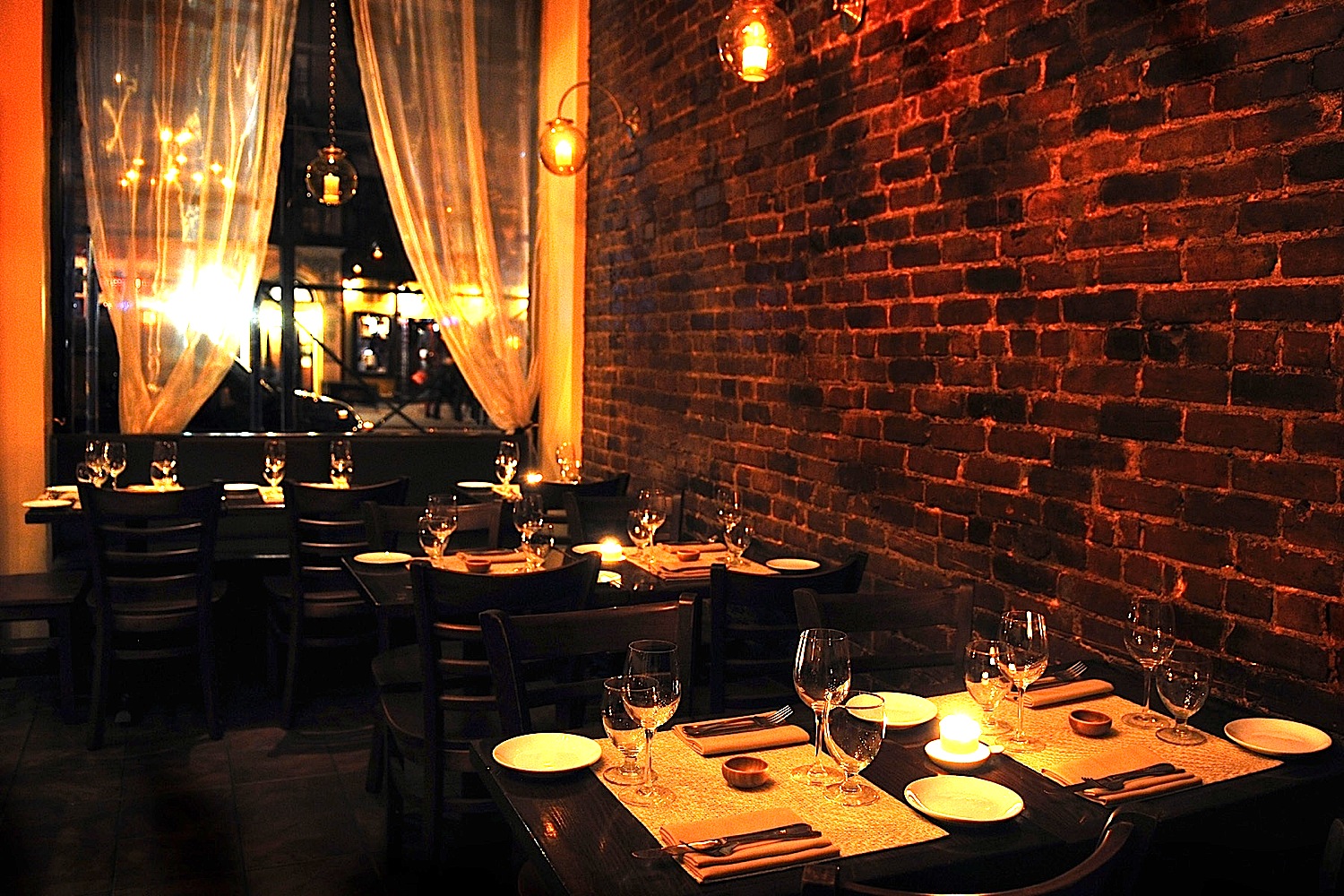 very gently pan-roasted and
came with an elegant, mousseline of parsnips and a
dash of Sicilian capers.
very gently pan-roasted and
came with an elegant, mousseline of parsnips and a
dash of Sicilian capers.Desserts are not just an afterthought: though few in number they are well wrought, like Vai's light, lovely semi-freddo. There is also a judicious cheese selection. Vai's wine list is well thought through for the Mediterranean flavors here, and very decently priced.
If you're on the Upper West Side around 5:30 PM, maybe after a visit to the Museum of Natural History or New York Historical Society nearby, or you want to eat small dishes before theater or after, Vai is ideal, with an early evening menu at $29. It's even better if you take your time over dinner, and well worth a trip from midtown; Soho has its own Vai to take care of the rest of the population.
Vai is open daily for dinner; Crudo and appetizers $9-$15, pastas $15-$17, main courses $18-$29; 5-Course Chef’s Menu $59, with wine $89; Mon. night prix fixe menu with wine $39.
❖❖❖
NOTES FROM THE WINE CELLAR
by Brian Freedman
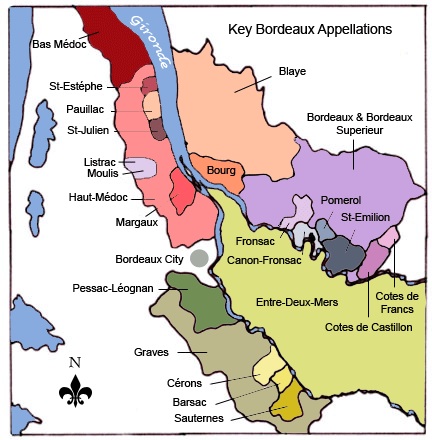 Margaux,
in terms of reputation, can fairly be compared to
Chanel, Steven Spielberg, and
Ferrari. All four of them, after all, possess a cachet
so instantly recognizable
that even people who have never experienced them
first-hand recognize their
quality and importance. Their reputations, in other
words, have lifted them
above and beyond the confines of their specific
categories: A Chanel dress is
more than an item in a woman’s wardrobe, just as a
film by Spielberg is
(usually) more than a pleasant way to spend a few
hours in the dark and a
Ferrari is so much more than a really fast car.
Margaux,
in terms of reputation, can fairly be compared to
Chanel, Steven Spielberg, and
Ferrari. All four of them, after all, possess a cachet
so instantly recognizable
that even people who have never experienced them
first-hand recognize their
quality and importance. Their reputations, in other
words, have lifted them
above and beyond the confines of their specific
categories: A Chanel dress is
more than an item in a woman’s wardrobe, just as a
film by Spielberg is
(usually) more than a pleasant way to spend a few
hours in the dark and a
Ferrari is so much more than a really fast car.
And
so it is with Margaux. Much of this reputation among
the non-wine-drinking
public, I think, is built on the back of Château
Margaux, the venerated First
Growth whose iconic château is as emblematic of
“wine” and “prestige” in
general as anything in the world of the vine. But fans
of this great Left Bank
commune know that there’s much more to it than that.
Margaux,
after all, is home to some of the finest, most
justifiably venerated wines on
the planet: Châteaux Lascombes, Brane-Cantenac,
Palmer, and more have sunk
their roots here and turned the resulting juice into
the wine equivalent of
gold.
Earlier
this month, the Wine Media Guild hosted John Kolasa of
Château Rauzan-Ségla
(below, left)
and
Emmanuel Cruse of Château
d’Issan (below)
for a multi-vintage tasting and lunch
featuring their remarkable wines.
The
benefits of a tasting like this are impossible to
overstate, and for a number
of reasons. From an academic standpoint, it provides
the opportunity to see how
a particular property expresses itself across a range
of vintages, making it
easier to understand what sets it apart from its
neighbors. The same is true in
terms of vintage expression: Tasting two different
wines from the same year
helps to contextualize how the weather impacted wines
in a particular part of
the world, and deepens your understanding even of
other wines from that vintage
not included
in the tasting.
Perhaps
most important, however, is the fact that the wines at
these Wine Media Guild
tastings are not tasted in a vacuum. Rather, once the
tasting notes have been
compiled and the critical judgments rendered, they are
enjoyed at lunch,
alongside the food they were made to accompany in the
first place.
First-time
visitors to Bordeaux itself are often surprised by how
beautifully these wines
work at the table, and how freely they are poured.
Indeed, for all the talk of
iconic bottles and skyrocketing prices and collectors
who invest in wines to
either show them off or flip them for profit as they
would a piece of real
estate, the great wines of Bordeaux, in my experience,
are food wines beyond all else.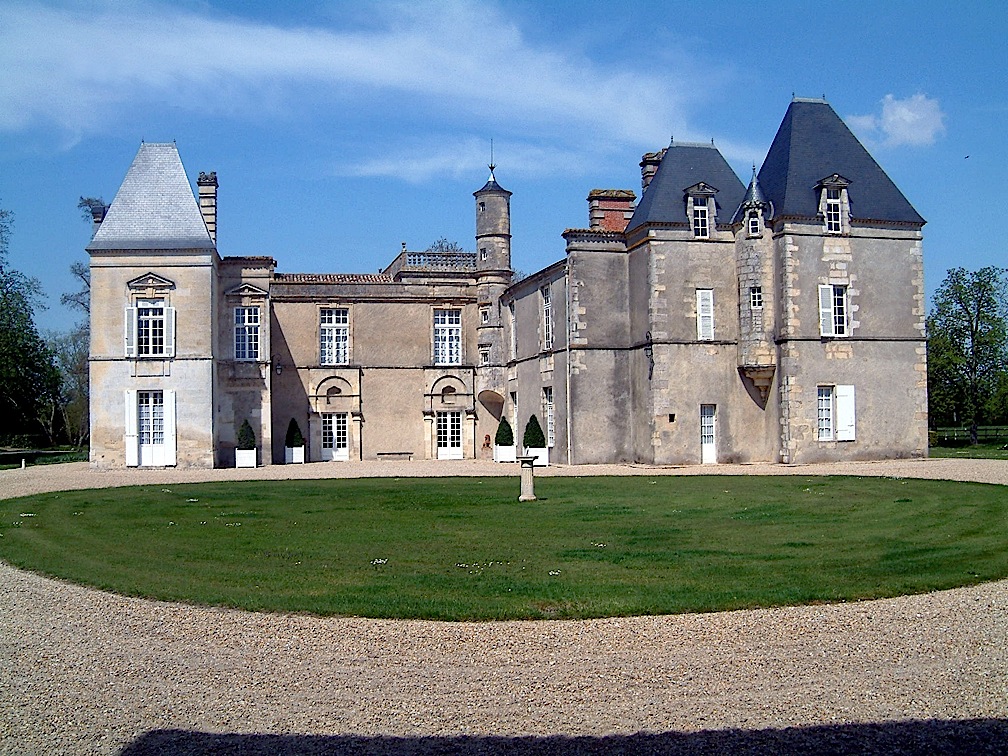 Show me a well-prepared duck, and I’ll
show you a bird that would be even better with a great
bottle of classed-growth
Bordeaux sipped alongside it.
Show me a well-prepared duck, and I’ll
show you a bird that would be even better with a great
bottle of classed-growth
Bordeaux sipped alongside it.
These
tasting notes, however, were taken before the food was
served, the better to
preserve my palate and provide an identical framework
within which they each
were initially experienced. Overall, I was not just
impressed with the wines,
as expected, but also with the consistency of them.
All the vintages manifested
themselves in unique ways, of course, but despite
these differences, and
despite the occasionally difficult circumstances that
each particular year’s
weather presented, they all showed how careful fruit
selection and technically
conscientious winemaking allow the pedigree of a great
château’s land to stand
out and make itself known with all the gusto and
idiosyncrasy it deserves to.
Château
d’Issan 2008 ($55) showed currant and pine needle
notes on a nose that led to a
tightly-wound, tannic palate that still needs several
years to open up--or at
least a solid stint in the decanter. There’s very good
potential here, but it’s
playing it all quite close to the vest right now. The
2006 ($66) was far more giving,
with a lovely cedar and sandalwood perfume. I’d still
hold onto it for another
four years, but it’s starting to come into its own
nicely. The 2005 ($98), however,
was a standout, as expected for this great vintage.
Classic notes of sage and
green pepper combined with blackberry, black and red
raspberry, cedar, and
mineral, all of it backed up by sweet, caressing
tannins. The pedigree of the
vintage at this château is on brilliant display
in this bottle. Buy lots of it
if you can.
Château
d’Issan 2004 ($68) was also a real success, and
demonstrated why this
underappreciated vintage has always deserved more love
and affection that it
gets; like a middle child, it’s unfortunately
sandwiched between two highly
lauded ones, the ’03 and ’05. It was feminine and
filigréed, with grilled sage,
cherry pipe tobacco, and 2004’s telltale cigar-like
notes. Lovely. The 2001 ($84)was
a creamier wine, more seductive with its menthol and
eucalyptus hints, and the
2000 ($111), like the 2005, lived up to its reputation
with ease and exuberance, its
aromatically beautiful nose and sexy, chocolatey
tannins framing a
concentrated, deep palate of spiced plum, currants,
leather, and exotic spices.
The
1999 ($84), at nearly 13 years old, was a spicier
wine, with cocoa powder, graphite,
lots of red fruit, and dusty tannins than still
promise quite a few years of
evolution. Finally, the 1995 ($222), from magnum,
demonstrated exactly what you want
from mature Bordeaux, its licorice and gravel-hinting
character freshened up by
a bracing hit of green pepper.
Among
the bottles from Rauzan-Ségla, the 2009 ($120),
despite the extraordinary nature of
the vintage, was my least favorite of the tasting, too
sweet, too reliant on
its plum cake, vanilla, and crème
brûlée notes right now. The 2008 ($73),
with its
greener, more minerally character, and blackberry and
black currant fruit, was
a better food wine, though slightly hollow in the
middle.
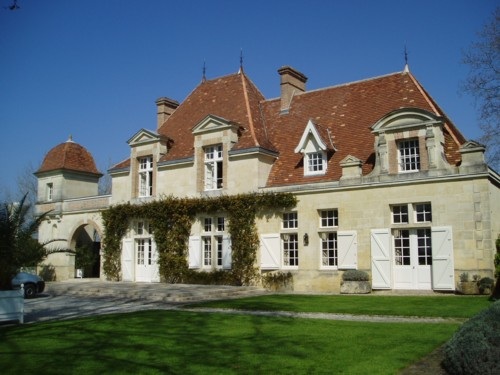 And
then I came to the 2005 ($152), which was one of the
highlights of the day, a
concentrated, detailed beauty whose descriptors run
the gamut from tobacco and
scorched earth to aromatically complex spice and fig
cobbler. It was warm,
comforting, and utterly engaging, and promises to
evolve for another 20+ years,
easily. If you can find this wine, but as much as you
can.
And
then I came to the 2005 ($152), which was one of the
highlights of the day, a
concentrated, detailed beauty whose descriptors run
the gamut from tobacco and
scorched earth to aromatically complex spice and fig
cobbler. It was warm,
comforting, and utterly engaging, and promises to
evolve for another 20+ years,
easily. If you can find this wine, but as much as you
can.
I’ve
never been a great lover of 2003 ($84) in general, but
Rauzan-Ségla’s wine that year
was excellent, a gripping, sappy red of ample cherry,
chocolate, and humidor
character, as well as a sense of balance that I
occasionally find missing in
the vintage. By contrast, the 2001($95) was more
mysterious, a smoky, sage- and
red-currant-flecked wine more feminine than either of
the preceding two
vintages. I particularly liked the toasted fennel note
at the end of this one.
A
magnum of 1999 ($81 for 750 ml bottle) proved to
be warm and toasty, with cherry creme, licorice, birch
bark, and an intriguing sense of savoriness. The minty
1995 ($106) was intriguingly
complicated by spiced plum, red cherry, and Indian and
North African spices.
Finally, the 1986 ($232), despite its more than
quarter-century of age, still showed
an almost amazing freshness, its delicate eucalyptus
aromatics presaging
flavors of flowers, dried fig, and cherry, all of it
perfectly balanced, all of
it given excellent posture by a seam of still-linear
tannins. Drink this now,
and make a night of it.
As
is so often the case with Bordeaux, these wines showed
the breeding and overall
reliability of the region as a whole, as well as the
remarkably appealing
character of Margaux itself. Its reputation as a
source of world-class wines
was made long ago; fortunately for all of us, it
continues to prove itself even
now, as exemplified by these two remarkable
châteaux.
Explore wine country with Brian Freedman, nationally acclaimed chef Daniel Stern of R2L Restaurant, and wine writer Ben Weinberg on the Wine on the Road ultimate tour of Champagne, France, including behind-the-scenes access to top winemakers and their incomperable wines, luxury accomodations, Michelin-starred meals, and more. For more information, visit wineontheroad.com/champagneunfiltered.php <http://wineontheroad.com/champagneunfiltered.php> , or attend the wine dinner at R2L on March 5th at 7pm for details and an exclusive offer. $145/person, including food and wine. Call 215.564.5337 for reservations.
❖❖❖
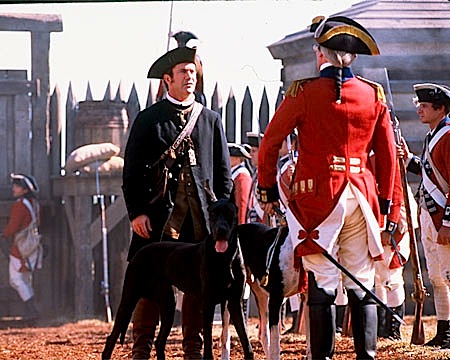
BLOCK THAT (EXTENDED) METAPHOR!
"`The British are leaving, the British are leaving,' the locals shouted. Well, maybe not. But it was a bit of a shock when the Pub pulled out of Rocky River in August. The Brit-pub was a dandy ol' chap, complete with fish, chips, Boddington's, soccer on the tube and the Kinks on the sound system. For whatever reason, the colonists didn't take to it. Hence, Burntwood Tavern: a place that opts for less flair and a comfy, rustic vibe common to Rocky River spots."----John Petkovic, Cleveland Plain Dealer.
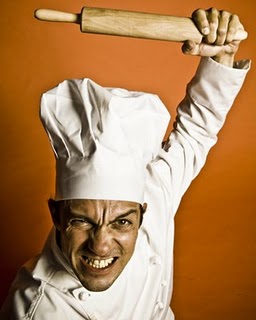
Chef Scott Bagshaw of Deseo restaurant in Winnipeg was so disappointed not to make Free Press food critic Marion Warhaft's annual top 10 list that he wrote, "I tweeted it so now I'm gonna Facebook it. Marion retire you ignorant slut." When asked by a reporter why she had not put Deseo on her list, she said, "There's only one reason he wasn't on the list: I haven't reviewed his new restaurant. If I haven't done a full review, I can't put it on my top-10 list."
❖❖❖
Any of John Mariani's
books below may be ordered from amazon.com.
 |
My latest book, which just won the prize for best book from International Gourmand, written with Jim Heimann and Steven Heller, Menu Design in America, 1850-1985 (Taschen Books), has just appeared, with nearly 1,000 beautiful, historic, hilarious, sometimes shocking menus dating back to before the Civil War and going through the Gilded Age, the Jazz Age, the Depression, the nightclub era of the 1930s and 1940s, the Space Age era, and the age when menus were a form of advertising in innovative explosions of color and modern design. The book is a chronicle of changing tastes and mores and says as much about America as about its food and drink.
“Luxuriating vicariously in the pleasures of this book. . . you can’t help but become hungry. . .for the food of course, but also for something more: the bygone days of our country’s splendidly rich and complex past. Epicureans of both good food and artful design will do well to make it their coffee table’s main course.”—Chip Kidd, Wall Street Journal.
“[The menus] reflect the amazing craftsmanship that many restaurants applied to their bills of fare, and suggest that today’s restaurateurs could learn a lot from their predecessors.”—Rebecca Marx, The Village Voice. |
"Eating Italian will never be the same after reading John Mariani's entertaining and savory gastronomical history of the cuisine of Italy and how it won over appetites worldwide. . . . This book is such a tasteful narrative that it will literally make you hungry for Italian food and arouse your appetite for gastronomical history."--Don Oldenburg, USA Today. "Italian
restaurants--some good, some glitzy--far
outnumber their French rivals. Many of
these establishments are zestfully described
in How Italian Food Conquered the World, an
entertaining and fact-filled chronicle by
food-and-wine correspondent John F.
Mariani."--Aram Bakshian Jr., Wall Street
Journal.
"Equal parts
history, sociology, gastronomy, and just
plain fun, How Italian Food Conquered the
World tells the captivating and delicious
story of the (let's face it) everybody's
favorite cuisine with clarity, verve and
more than one surprise."--Colman Andrews,
editorial director of The Daily
Meal.com. "A fantastic and fascinating
read, covering everything from the influence
of Venice's spice trade to the impact of
Italian immigrants in America and the
evolution of alta cucina. This book will
serve as a terrific resource to anyone
interested in the real story of Italian
food."--Mary Ann Esposito, host of PBS-TV's
Ciao
Italia. "John Mariani has written the
definitive history of how Italians won their
way into our hearts, minds, and
stomachs. It's a story of pleasure over
pomp and taste over technique."--Danny Meyer,
owner of NYC restaurants Union Square Cafe,
Gotham Bar & Grill, The Modern, and
Maialino.
|
 |
 |
 |
 |
 |
 |
 |
 |
 Everett Potter's Travel Report:
Everett Potter's Travel Report: 
 Eating Las Vegas
is the new on-line site for Virtual Gourmet
contributor John A. Curtas., who since 1995
has been commenting on the Las Vegas food
scene and reviewing restaurants for Nevada
Public Radio. He is also the
restaurant critic for KLAS TV, Channel 8 in
Las Vegas, and his past reviews can be
accessed at KNPR.org.
Click on the logo below to go directly to
his site.
Eating Las Vegas
is the new on-line site for Virtual Gourmet
contributor John A. Curtas., who since 1995
has been commenting on the Las Vegas food
scene and reviewing restaurants for Nevada
Public Radio. He is also the
restaurant critic for KLAS TV, Channel 8 in
Las Vegas, and his past reviews can be
accessed at KNPR.org.
Click on the logo below to go directly to
his site.

Tennis Resorts Online: A Critical Guide to the World's Best Tennis Resorts and Tennis Camps, published by ROGER COX, who has spent more than two decades writing about tennis travel, including a 17-year stretch for Tennis magazine. He has also written for Arthur Frommer's Budget Travel, New York Magazine, Travel & Leisure, Esquire, Money, USTA Magazine, Men's Journal, and The Robb Report. He has authored two books-The World's Best Tennis Vacations (Stephen Greene Press/Viking Penguin, 1990) and The Best Places to Stay in the Rockies (Houghton Mifflin, 1992 & 1994), and the Melbourne (Australia) chapter to the Wall Street Journal Business Guide to Cities of the Pacific Rim (Fodor's Travel Guides, 1991).


The Family Travel Forum - A
community for those who "Have Kids, Still Travel" and
want to make family vacations more fun, less work and
better value. FTF's travel and parenting features,
including reviews of tropical and ski resorts, reunion
destinations, attractions, holiday weekends, family
festivals, cruises, and all kinds of vacation ideas
should be the first port of call for family vacation
planners. http://www.familytravelforum.com/index.html
ALL YOU NEED BEFORE YOU GO


MARIANI'S VIRTUAL GOURMET
NEWSLETTER is published weekly. Editor/Publisher: John
Mariani.
Contributing Writers: Christopher Mariani, Robert Mariani,
John A. Curtas, Edward Brivio, Mort Hochstein,
Suzanne Wright, and Brian Freedman. Contributing
Photographers: Galina Stepanoff-Dargery,
Bobby Pirillo. Technical Advisor: Gerry McLoughlin.
© copyright John Mariani 2012
